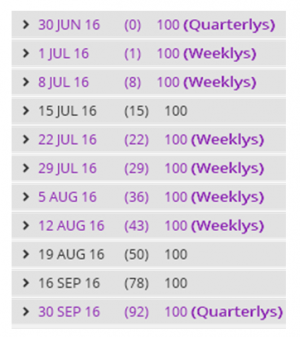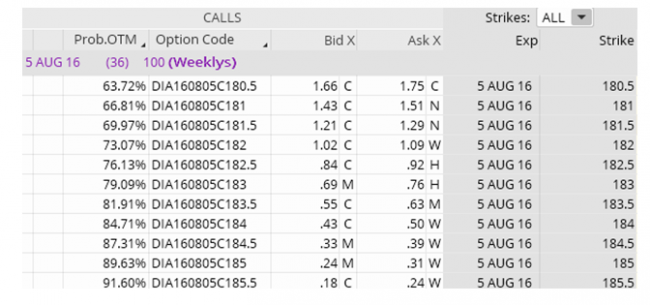Let me get this out of the way now: I’m bearish, at least over the short term. I expect to see sideways-to-lower price action over the short term.
In this case, a bear call spread – or vertical call spread – is the trading strategy of choice. It’s probably the most used trading strategy in my arsenal of options selling tools for a variety of reasons. Here are a few:
- I believe the market doesn’t crash higher; it crashes lower.
- The strategy allows me to have a margin of error just in case my directional assumptions are wrong.
- I can define my own risk/reward at order entry.
- Basically, I have the ability to choose my own probability of success on the trade.
- Of course, the higher the probability, the more I stand to lose. But again, I have the ability to define my risk, through proper position sizing, at order entry.
A vertical call is a credit spread composed of a short (sold) call at a lower strike price and a long (bought) call at a higher strike price.
[ad#Google Adsense 336×280-IA]The nature of call pricing tells us that the higher-strike purchased call will cost less than the money collected from the lower-strike sold call.
That’s why this spread involves a cash inflow, or credit.
The ideal outcome is for the underlying stock price to stay below the strike price of the sold call through option expiration.
In this scenario, the spread expires worthless, allowing me to keep the premium collected upfront.
Trading Strategy: DIA
In this example, DIA is currently trading for $178.60 and is in a short-term extreme overbought state.
To start, I have to decide which of several expiration cycles to choose. I prefer to choose an expiration cycle with roughly 25-50 days left.

For this example’s sake, I’ll choose the August expiration cycle with 36 days left until expiration.
Once I decide which expiration cycle to use, I go straight to the probabilities.

I typically start with a short strike that has a probability of success around 80%. The short strike defines my trade. It tells me how much I am going to collect in premium, plus my probability of success on the trade.
The August 183 strike has a 79.09% probability of success. Essentially, by choosing the 183 strike, I am content with the 79.09% probability that DIA will not push from its current price of $178.60 to $183 over the next 36 days.
I could choose a more conservative strike – like the 184 strike with an 84.71% probability of success, or even the 184.5 strike with an 87.31% probability of success – but for this example, I am simply going with the strike closest to 80%.
Next, I need to choose a strike to buy. This defines my risk. I can decrease my risk exposure by choosing a strike that is closer to my short strike of 183 – say, the 184 strike. Or, I can choose a strike that is further away from my short strike of 183 and pay less for the contract, thereby creating more premium in the trade.
I could sell the August 183 calls for roughly $0.72 and buy the August 185 calls for roughly $0.28. That equates to a credit of $0.44, or 28.2%.
After calculating the return, I decided the 28.2% was too high. I know it’s a strange way to look at investing, but it’s necessary to realize that a 28.2% return over 36 days comes with an associated risk. Nothing is free in the investing world. Don’t fool yourself. I am fine with a lower return, knowing I can increase my probability of success on the trade.
So, let’s move on to the August 183.5 strike with a probability of success of 81.91%.



I will sell the August 183.5 strike for roughly $0.58 and simultaneously buy the August 185.5 strike for roughly $0.22. By doing so I will bring in a credit, or premium, of $0.36. The return on the trade is 22.0%.
Even though I am bringing in less premium, I have a larger margin of error on the trade and a higher probability of success. Essentially, as long as DIA stays below the 183.5 strike at expiration in 36 days I have the ability to reap a max return of 22.0%. Realistically, it’s going to be slightly less, because I prefer to buy the spread back before expiration to lock in profits, take off risk and afford myself the opportunity to sell more premium.
— Andy Crowder
[ad#wyatt-generic]
Source: Wyatt Investment Research
